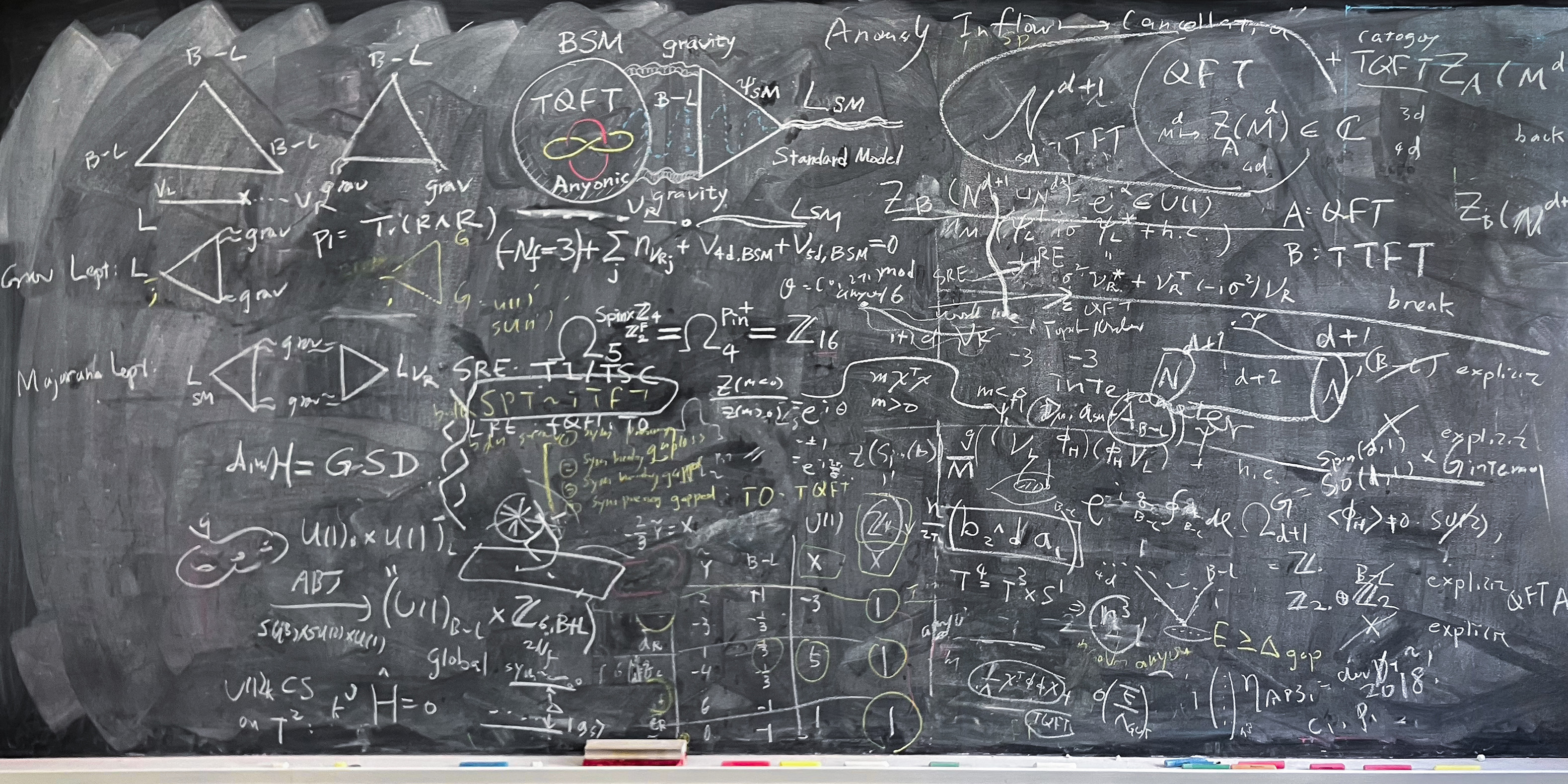- All updates
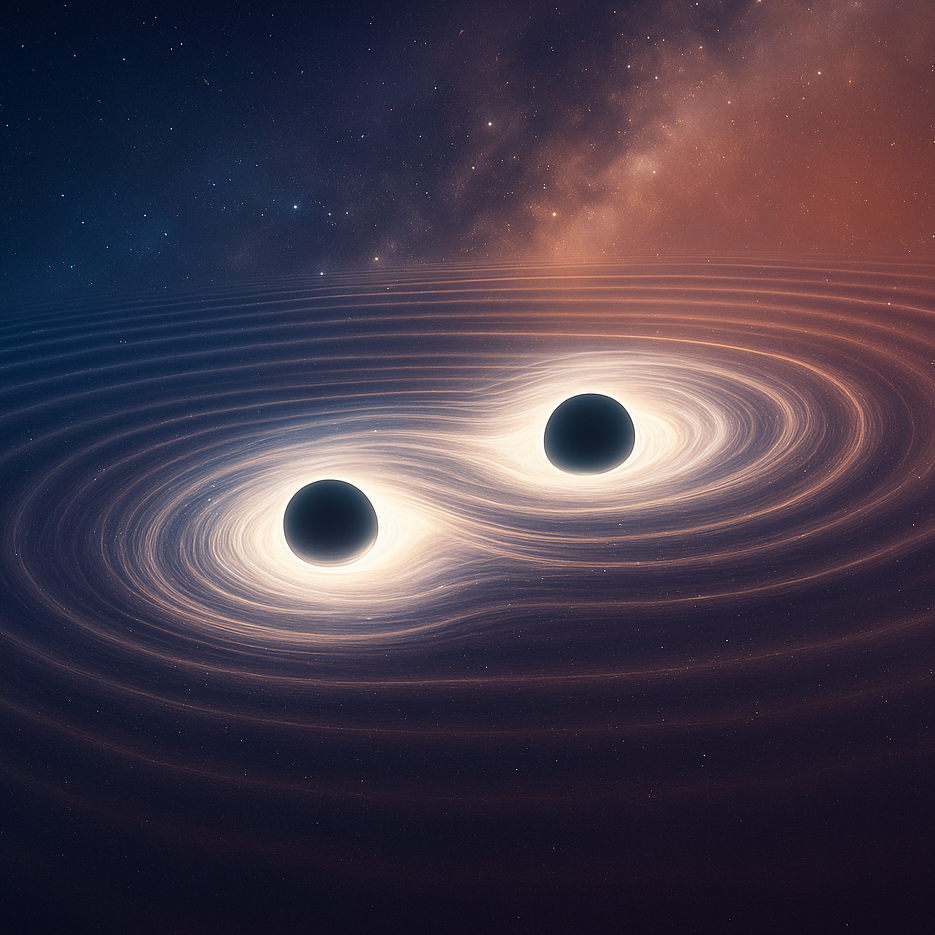
Eventscoming 6 nov
The double copy
Chris White traces the origins and impact of a remarkable new correspondence linking non-abelian gauge theories with general relativity.
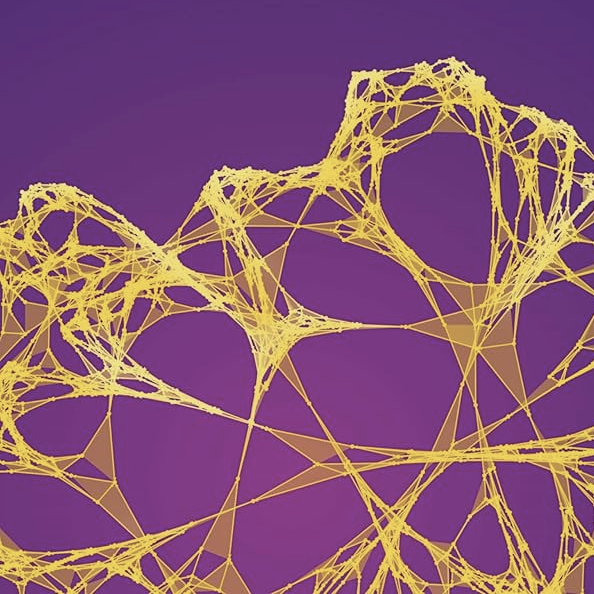
Events20 Oct
Meet Stephen Wolfram
Theoretical physicist and innovator Stephen Wolfram discusses the big questions facing science with the London Institute and its guests.

Events20 Oct
Random matrices
Fedor Levkovich-Maslyuk traces how matrix models reveal striking connections between quantum gravity, string theory and integrability.
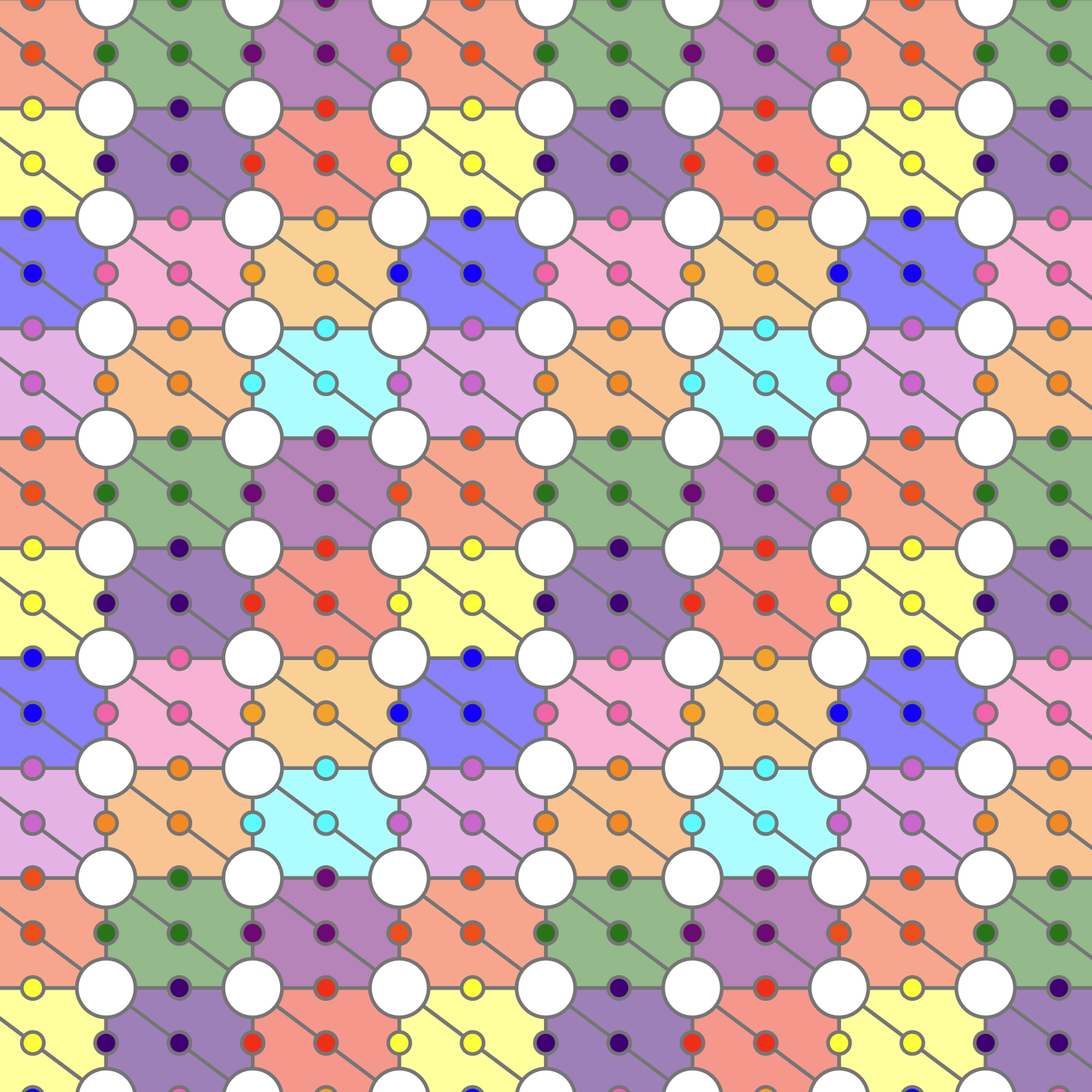
Events17 Oct
Tiling and Tonnetze
Konstanze Rietsch explores Euler’s Tonnetz through the lens of modern geometry, revealing new links between music, symmetry and harmony.
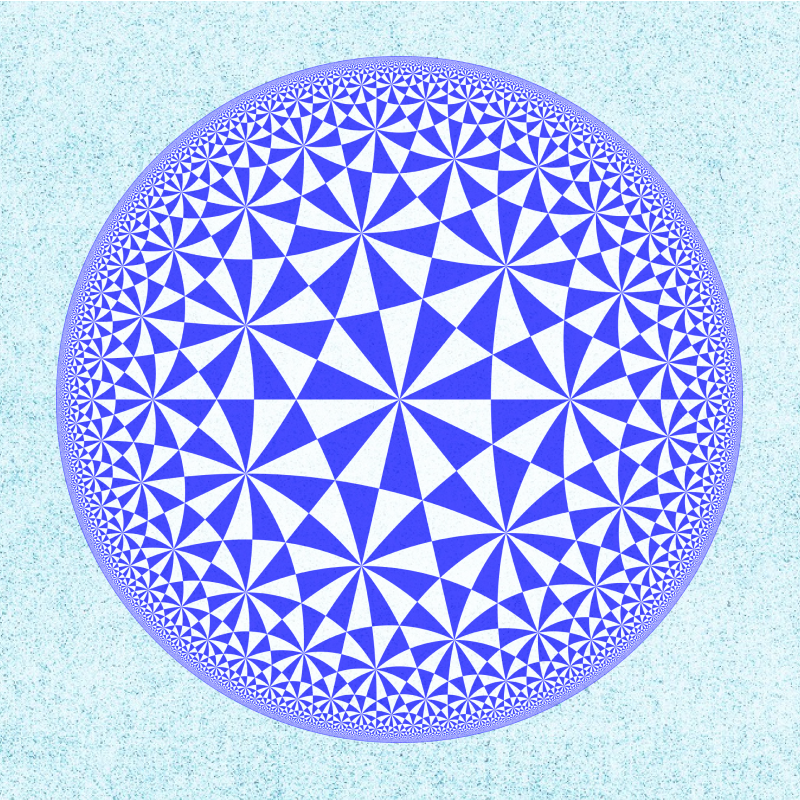
Events17 Oct
Strings from graphs
Edward Mazenc shows how Grothendieck’s dessins d’enfants reveal a deep link between gauge theory, string theory and the AdS/CFT duality.
Events17 Oct
Gapping chiral fermions
Rishi Mouland demonstrates how generalised notions of symmetry can be used in novel ways to probe strongly coupled quantum field theories.
Press16 Oct
Bubble trouble
In his Financial Times column on the AI boom, John Thornhill quotes our live interview with physicist and entrepreneur Stephen Wolfram.
Events16 Oct
Defects and scattering
Christian Copetti from Oxford University shows how generalised symmetries guide quantum systems, shaping boundary conditions and defects.
Papers13 Oct
Futaki for reflexives
The Journal of Mathematical Physics accepts the paper “Futaki invariants and reflexive polygons” by our fellow Yang-Hui He and coauthors.
Events13 Oct
Meet Stephen Wolfram
Theoretical physicist and innovator Stephen Wolfram discusses the big questions facing science with the London Institute and its guests.
Press12 Oct
A bridge with India
Nature India’s editor hails our Ramanujan Junior Researchers scheme, inspired by the friendship between Srinivasa Ramanujan and G.H. Hardy.
Press12 Oct
Murmuration of assent
In a letter in The Sunday Times, our fellow Yang-Hui He affirms that, with the proper support, AI promises to reshape discovery itself.
News9 Oct
Ramanujan Researchers
The London Institute is partnering with the Indian government to create a scheme for young theorists and mathematicians to work with us.
People9 Oct
New governor
As well as a LIMS governor, Amit Jain is a co-founder of Signal Capital Partners, a $5bn private asset management firm, based in London.
People8 Oct
New governor
As well as a LIMS governor, Ammad Ahmad is a founding partner at Atheneum, a market insights platform that has offices worldwide.
People7 Oct
New governor
As well as a LIMS governor, Thore Graepel is a physicist, computer scientist and Distinguished Researcher in AGI Futures at Google DeepMind.
Events7 Oct
Maths in the age of AI
In the Royal Institution’s lecture theatre, Prof. Yang-Hui He reflects on how growing AI-human collaboration is shaping the future of maths.
Events7 Oct
AI’s history of hype
Thomas Haigh traces the rise of AI as an overhyped brand, from failed ideas to today’s powerful technologies and their unsettling impact.
People6 Oct
New trustee
As well as a LIMS trustee, Ben Delo is an entrepreneur and philanthropist whose causes include neurodiversity and mathematical discovery.
Events3 Oct
Integrable statistics
Alessandro Torrielli examines spin, statistics and strange particle behaviour in 1+1-dimensional integrable models and AdS_3 string theory.
Events3 Oct
Surveying scattering
Prof. Mark Gross explores how scattering diagrams are a powerful tool for capturing wall-crossing data in many diverse mathematical contexts.
Events2 Oct
Mechanics in a box
Prof. Darryl Holm explores how geometric mechanics links symmetry-breaking to dynamics, revealing patterns in nature’s complex systems.
Press29 Sep
Faraday’s masterclass
In The Oldie, our writer Thomas Hodgkinson celebrates the Royal Institution’s Friday Evening Discourses, the world’s oldest science talks.
Events29 Sep
How innovation works
In the Royal Institution’s lecture theatre, Martin Reeves reveals the startling truth about how innovation happens in science and technology.
Events25 Sep
Gravity from entropy
Ginestra Bianconi illustrates her novel approach to quantum gravity, which is grounded in statistical mechanics and information theory.
Events24 Sep
Entanglement in time
Alexey Milekhin explores how the Sachdev–Ye–Kitaev model and “entanglement in time” can reveal new ways of understanding quantum dynamics.
Events23 Sep
Decoding life with AI
Mikhail Burtsev explains how artificial intelligence is helping to decipher genomes in the Royal Institution’s iconic lecture theatre.
Press18 Sep
Friday night live
In the Idler, our writer Thomas Hodgkinson recounts how Michael Faraday inaugurated a 200-year-old masterclass in public speaking.
Events15 Sep
Maths in the age of AI
In the Royal Institution’s lecture theatre, Prof. Yang-Hui He reflects on how growing AI-human collaboration is shaping the future of maths.
Papers28 Aug
C, P and T in fractions
Advances in Theoretical and Mathematical Physics accepts the paper “C-R-T Fractionalisation, Fermions, and Mod...” by Juven Wang et al.
Papers25 Aug
Braid representations
We demonstrate that the Lawrence–Krammer representation arises as a q-deformation of the symmetric square of the Burau representation.
Papers25 Aug
Limits of attention
We demonstrate that transformer attention can only discriminate well at shorter context lengths, losing clarity as input length increases.
Papers22 Aug
Boosting AI reasoning
By increasing the effective depth of neural networks, we improve their sequential reasoning abilities in tasks involving cellular automata.
Papers19 Aug
Nonreciprocal breather
Producing the first examples of breathing solitons in one-dimensional non-reciprocal media allows their propagation dynamics to be analysed.
People17 Aug
Cognia Visitors
We are recruiting visitors to spend time at the London Institute and collaborate on theoretical aspects of life, learning and emergence.
People15 Aug
Mendeleev Visitors
We are funding Russian theorists to visit us at the London Institute to collaborate and to strengthen ties with their home institutions.
Papers13 Aug
Braid representations
Journal Linear Algebra and its Applications accepts the paper “The Lawrence-Krammer representation is a quantization...” by Oleksandr Kosyak.
Jobs1 Aug
Cognia Junior Fellows
The London Institute is hiring theorists to join us as Junior Fellows and work on theoretical aspects of life, learning and emergence.
Events1 Aug
Music to our ears
The Ukrainian concert pianist Sasha Grynyuk has generously lent us a Steinway grand piano, which was once played by Kissin and Brendel.
Papers25 Jul
On universal dynamics
Quantum many-body systems share patterns of dynamics that are exactly described by tridiagonal matrices based on continuous Hahn polynomials.
Papers25 Jul
Irreducible group action
We construct the unitary representation of an infinite-dimensional general linear group acting on a space and establish its irreducibility.
Events24 Jul
CFT tensor network
Prof. Zhengcheng Gu describes the construction of a fixed-point tensor network and its generalised symmetries in conformal field theory.
Events23 Jul
Erdős and topology
Prof. Misha Rudnev from the University of Bristol shows how algebraic geometry helped settle a famous discrete geometry conjecture of Erdős
Events23 Jul
Enumerative Galois
Prof. Frank Sottile of Texas A&M outlines the history and the state of the art of a keystone topic at the interface of algebra and geometry.
Events17 Jul
Automated conjectures
Madhuparna Das presents an AI agent automating novel mathematical conjecture discovery by integrating Lean’s Mathlib with LLMs’ creativity.
Press16 Jul
Celebrating Langlands
The Institute for Advanced Study discusses our science writer Ananyo Bhattacharya’s Nature feature on the geometric Langlands proof’s impact.
Press16 Jul
Langlands unlocked
The geometric Langlands proof brings mathematicians a step closer to a grand unified theory, Ananyo Bhattacharya writes in a Nature feature.
Events14 Jul
Where two worlds meet
Three leading experts show how the idea of symmetry forms key interfaces between algebra and geometry through the lens of their recent work.
Papers10 Jul
Nonreciprocal breather
The Journal Physical Review X accepts the paper “Non-reciprocal breathing solitons” by our Arnold Fellow Oleksandr Gamayun and coauthors.
Events7 Jul
Decoding life with AI
Mikhail Burtsev explains how artificial intelligence is helping to decipher genomes in the Royal Institution’s iconic lecture theatre.
Papers6 Jul
Fibonacci anyons
With IBM Quantum, we braid non-abelian Fibonacci anyons in string-net condensates to realise fault-tolerant universal quantum computation.
Papers3 Jul
On universal dynamics
The Journal of High Energy Physics accepts “Exactly solvable models for universal operator growth” by Oleksandr Gamayun and coauthors.
Events3 Jul
Discriminants & physics
Ed Segal from UCL will talk about semi-orthogonal decompositions of derived categories of toric varieties, coming from wall-crossing in GIT.
Papers2 Jul
Optimal transfer
We use the quantum brachistochrone method to design an optimal control strategy for the fastest quantum state transfer in long qubit chains.
People1 Jul
Khodorkovsky Fellow
Dr Kurnosov is a Khodorkovsky Research Fellow at LIMS. His work focuses on complex geometry, hyperkähler geometry and Calabi-Yau manifolds.
Website29 Jun
Press redressed
We’ve updated our press page by grouping together content into three new sections: Perspectives, Discovery in the News, and LIMS in the News.
Papers26 Jun
Analysing the vacuum
Birational methods in algebraic geometry are used to explicitly describe the vacuum structure of the Minimal Supersymmetric Standard Model.
Events24 Jun
Caltech in London
Caltech alumni gather at the London Institute to catch up on Caltech news and hear a discussion on how Britain can help American science.
Papers16 Jun
Standard Model vacuum
The rich and intricate vacuum geometry of the Minimal Supersymmetric Standard Model—a complex manifold—is characterised for the first time.
Events16 Jun
The mortality equation
Thomas Fink unveils a mathematical model showing programmed aging cannot be favoured by natural selection, even in a shifting environment.
